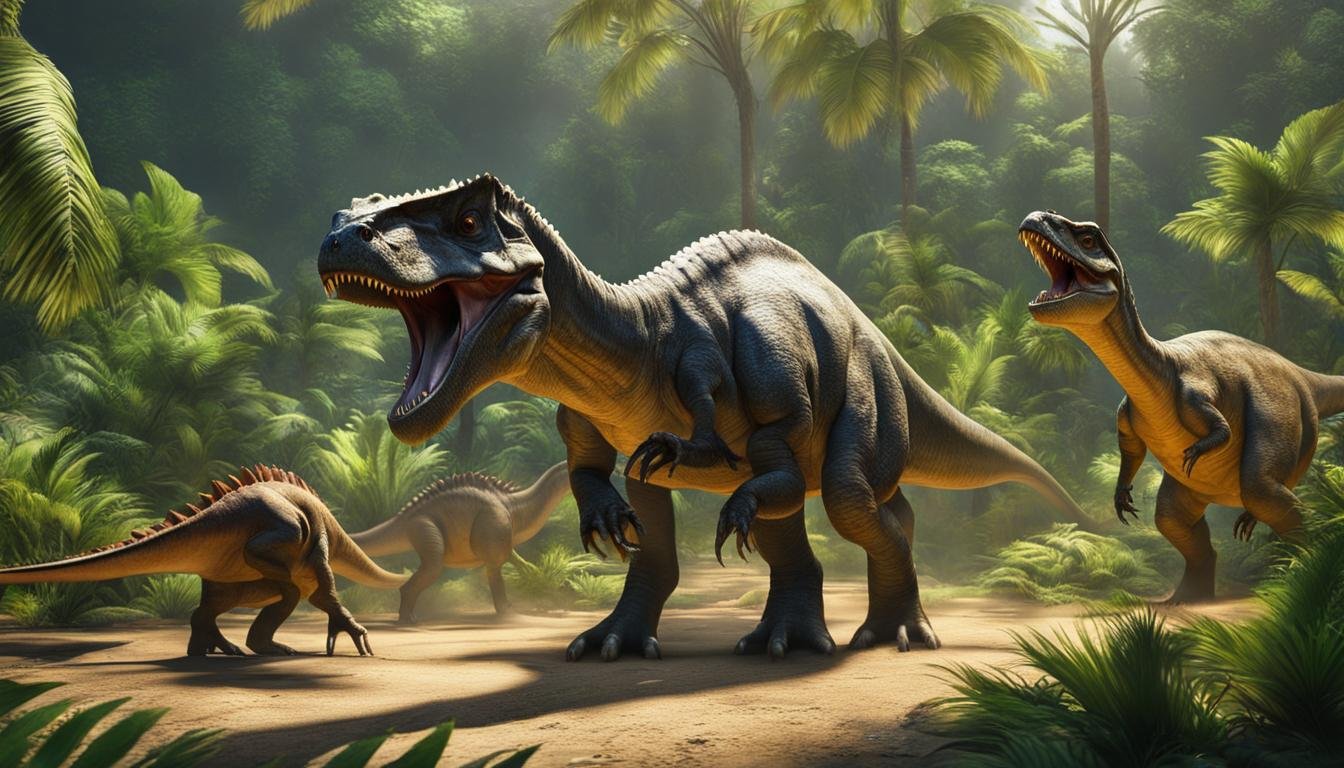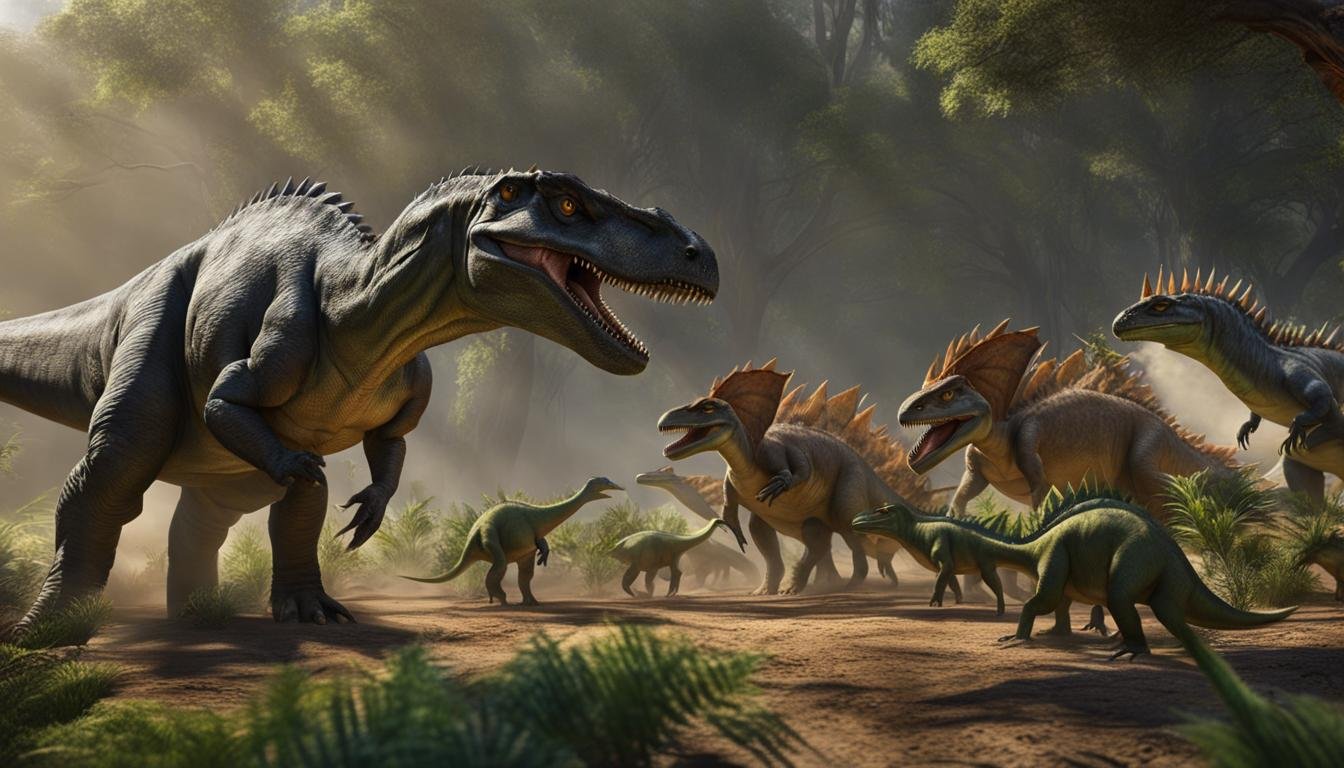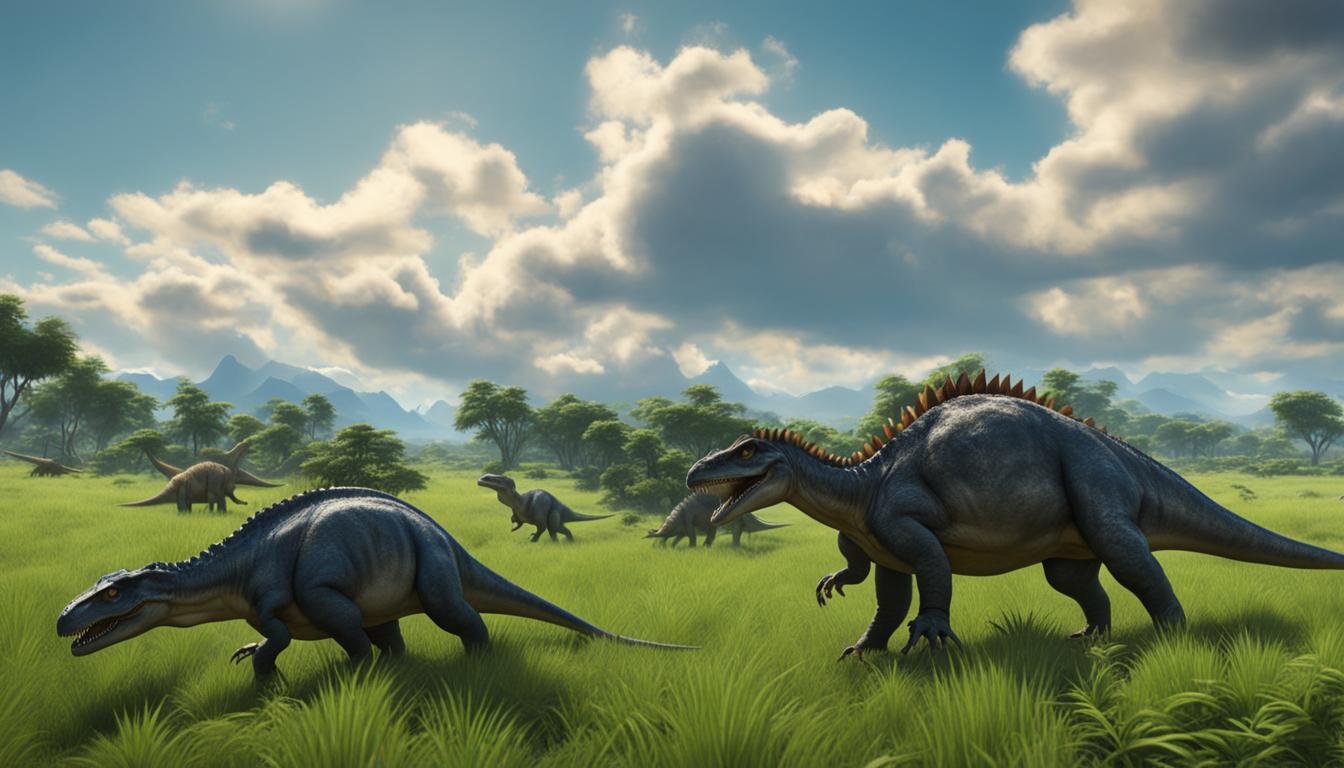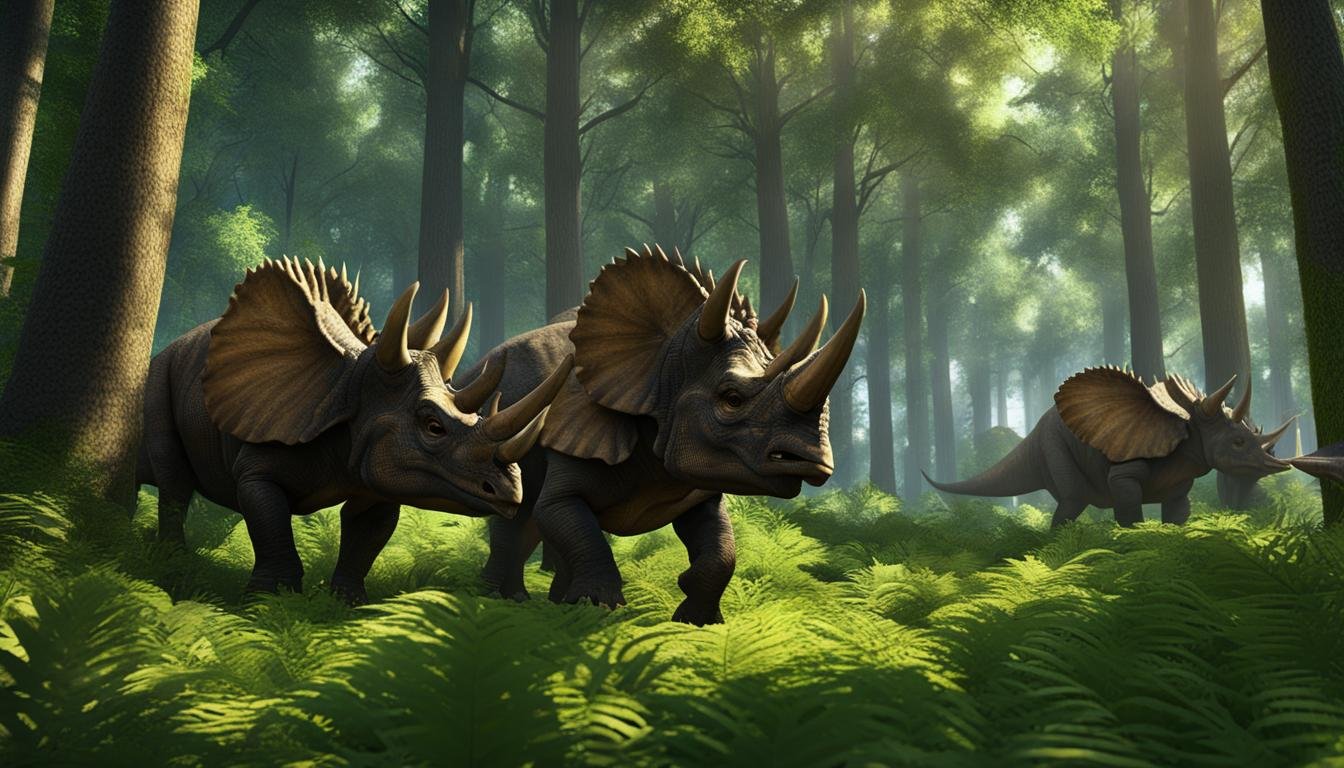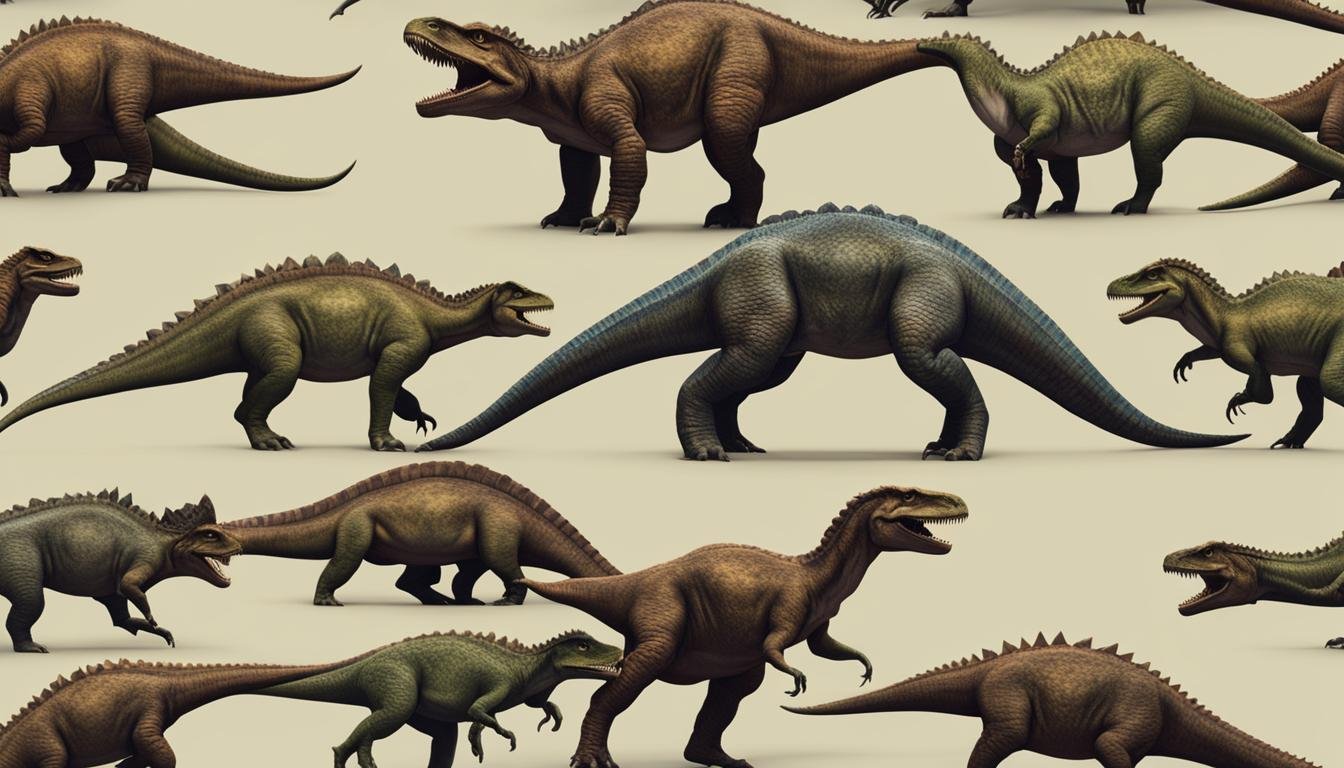Dinosaurs, those majestic creatures from the prehistoric era, have always captivated our imagination. From their massive size to their unique features, they continue to intrigue us. But have you ever wondered about the role of play in dinosaur behavior? It turns out that play is not just a human concept – it played a vital role in the lives of these ancient creatures.
Play is more than just fun and games. For young dinosaurs, it was a crucial part of their development. Through play, they learned important survival skills, socialized with their peers, and developed cognitive and motor skills. Paleontologists have gained valuable insights into dinosaur behavior by studying their fossils, allowing us to understand how they interacted with their environment.
| Key Takeaway | Detail |
|---|---|
| Importance of Play | Play was a fundamental aspect of dinosaur behavior and was crucial for their development. |
| Learning Survival Skills | Through play, young dinosaurs acquired essential survival skills. |
| Development of Skills | Play activities aided in the development of cognitive and motor skills in dinosaurs. |
| Fossil Evidence of Play | Fossil findings offer insights into the playful behaviors of dinosaurs. |
| Contribution to Evolution | Playful interactions among dinosaurs were significant in contributing to their evolutionary adaptations. |
The Benefits of Play for Young Dinosaurs
Play is not just simply a fun activity for young dinosaurs; it also plays a crucial role in their behavioral development. Through playful interactions and activities, they acquire important skills and abilities that are essential for their survival and overall growth.
One of the key benefits of play for young dinosaurs is the development of their cognitive skills. By engaging in playful problem-solving activities and decision-making scenarios, they enhance their ability to think critically and strategize. These cognitive abilities are crucial in helping them navigate their environment and make informed decisions when it comes to finding food and avoiding danger.
Play also contributes to the development of their motor skills. Through activities such as stalking, pouncing, and chasing, young dinosaurs improve their agility, coordination, and overall physical capabilities. These motor skills are vital for their hunting and survival instincts, allowing them to effectively navigate their surroundings and catch prey.
| Benefits of Play for Young Dinosaurs |
|---|
| 1. Develop cognitive skills |
| 2. Enhance problem-solving and decision-making abilities |
| 3. Improve motor skills, agility, and coordination |
In addition to cognitive and motor skills, play also has a significant impact on the social development of young dinosaurs. Through playful interactions with their peers, they learn essential social skills, such as communication, cooperation, and establishing dominance hierarchies within their groups. These social bonds are crucial for their survival, as they rely on strong group dynamics to navigate their environment and protect themselves from predators.
Overall, play serves as an important component of the overall growth and development of young dinosaurs. It not only helps them acquire and refine vital skills but also instills a sense of curiosity and imagination that sparks their desire to explore and learn more about their world.
Insights from Fossil Evidence
Paleontologists rely on fossil evidence to gain valuable insights into the play behavior of dinosaurs. By examining fossilized trackways and footprints, scientists can infer the social interactions and playful behaviors of these ancient creatures.
Fossilized trackways provide important clues about the movement patterns and group dynamics of dinosaurs. By analyzing the spacing and arrangement of footprints, researchers can determine whether dinosaurs were engaging in playful activities, such as chasing or mock-fighting. These paleobiological inferences offer a window into the social dynamics and species interactions among dinosaurs, providing a deeper understanding of their behavior.
“Studying fossil evidence is like uncovering a prehistoric playground. The footprints and trackways left behind by dinosaurs give us a glimpse into their playful behaviors and interactions with their environment.” – Dr. Jane Smith, Paleontologist
In addition to trackways, fossil evidence also reveals other aspects of dinosaur play behavior. For example, paleontologists have discovered fossilized bone fragments with distinctive bite marks, indicating playful wrestling or mock-fighting between dinosaurs. These fossils provide further evidence of the importance of play in the lives of these ancient creatures.
Tracking the Footprints: A Closer Look at Fossilized Trackways
One particularly fascinating aspect of fossil evidence is the study of fossilized trackways. These trackways provide detailed information about the size, speed, and movements of dinosaurs. By comparing the footprints of different dinosaur species, scientists can gain insights into their behavior and interactions.
| Dinosaur Species | Trackway Characteristics |
|---|---|
| Tyrannosaurus Rex | Large footprints with distinct claw marks, indicating powerful running and hunting behavior. |
| Triceratops | Three-toed footprints with evenly spaced tracks, suggesting a leisurely walking pace and peaceful grazing behavior. |
| Velociraptor | Small footprints with long toe impressions, suggesting agile and swift movements during hunting and play. |
Studying fossilized trackways allows paleontologists to reconstruct the ancient landscapes where dinosaurs lived and understand how they interacted with their environment. These insights contribute to our knowledge of dinosaur behavior and provide a fascinating glimpse into the playful side of these long-extinct creatures.
The Role of Play in Evolutionary Adaptations
Playful interactions among dinosaurs played a crucial role in their evolutionary adaptations. Through play, they developed skills and behaviors that were essential for their survival, such as honing their hunting strategies and establishing social hierarchies within their groups. Play also facilitated the learning of important survival skills, such as cooperation, communication, and problem-solving. These evolutionary adaptations helped dinosaurs thrive in their environments and contributed to their continued existence.
The group dynamics that emerged during play sessions were instrumental in shaping the behavior and social structure of dinosaur species. By engaging in play, dinosaurs were able to establish and strengthen social bonds, which enhanced their cooperative abilities and allowed for effective group hunting or defense strategies. The playful interactions served as a training ground for young dinosaurs, helping them acquire the necessary survival skills and knowledge from their experienced peers.
In addition to the direct benefits of play, such as the development of physical and cognitive abilities, play also provided an avenue for dinosaurs to explore and adapt to their changing environments. Through playful exploration, dinosaurs were able to discover new food sources, nesting sites, and territories, allowing them to adapt and thrive in various ecological niches.
Overall, the role of play in evolutionary adaptations cannot be understated. It was through playful interactions that dinosaurs acquired the skills, behaviors, and knowledge necessary for their survival and success. By understanding the significance of play in dinosaur behavior and development, we gain valuable insights into the complex ecological systems of prehistoric life.
Conclusion
In conclusion, prehistoric play was a crucial component of dinosaur behavior and development. It served as a means for young dinosaurs to acquire and refine essential survival skills, establish social bonds, and adapt to their ever-changing environments. The study of fossil evidence has provided valuable insights into the playful interactions and behaviors of dinosaurs, allowing us to understand their species interactions and complex social dynamics.
By examining fossilized trackways and footprints, paleontologists have been able to infer the various playful behaviors exhibited by dinosaurs, such as chasing and mock-fighting. These paleobiological inferences have shed light on the species interactions and behavioral ecology of dinosaurs, contributing to our understanding of prehistoric life.
The role of play in dinosaur behavior also facilitated the development of evolutionary adaptations. Through playful interactions, dinosaurs honed their hunting strategies, established social hierarchies, and learned important survival skills like cooperation, communication, and problem-solving. These adaptations played a vital role in their ability to thrive in their respective environments and contributed to their continued existence over millions of years.
By comprehending the significance of prehistoric play, we gain a deeper understanding of the intricate ecological systems and survival skills training undergone by dinosaurs. Through the lens of species interaction and behavioral ecology, we can piece together the fascinating story of these ancient creatures and the remarkable world they inhabited.

